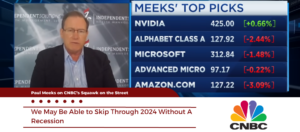We are six months into a turbulent 2020, having experienced a worldwide pandemic, a 35+% fall in stock prices, a (0.31%) yield on the 10 year U.S. Treasury Note, a three month shutdown of the economy and an imminent recession to follow. Amazingly, the stock market value on June 8th was almost on top of its value on 12/31/2019.
What have we learned from all of this? No, this is not a riskless market! While the Federal Reserve came to the rescue again, risk is running high, due to over valuations, causing the same nervousness that triggered panic selling this past March. Welcome to the world of passive index investing.
Passive investors now make up 50+% of the markets and with their momentum driven strategy of buying the market and ignoring valuations of individual stocks, they push the market to historically expensive valuations. Taking it one step further, the weighting of the Tech Sector in the S&P 500 Index, is now 26+% and if you add the Communication sector (10.9%), where Google, Netflix and Facebook all reside, you have a total weighting of about 37%. What we have learned in this crisis is that the volatility in Technology related companies was not what it used to be. The larger cap tech companies fell less than the market at the panic point in March and rose faster than the other sectors in the ensuing rally.
Our strategy has been to own companies with strong balance sheets (low debt, strong cash positions, growing Shareholder equity and minimal Pension Liability), strong free cash flow, good management, leading products and services and a commitment to growing the dividend and reinvesting in their businesses. Many of the Tech Companies we own fall into this Category.
We believe the volatility in these markets will continue over the remainder of the year for the following reasons:
- Economic demand will exceed supply due to the difficulty of reopening the economy and getting workers back on the job.
- Many businesses cannot justify opening partially and will wait for a full opening. This will limit the amount of workers that go back to work.
- Millions of jobs will be eliminated permanently.
- The virus is expected to resurface as the economy opens up, and in the fall, when schools open and the weather keeps us inside.
- A tremendous amount of stimulus has been injected into the economy with the hope of dampening the recession but was funded with trillions of dollars of new debt, on top of this year’s $1 Trillion deficit spending. More stimulus is expected to come. While the stimulus is positive in the short run the debt is a negative factor in the long run.
- The Federal Reserve has pledged to keep short term interest rates near zero for as long as it takes; if they can maintain control, which is in question.
- Zero interest rates will help inflate investments and real assets but will hurt banks who need a steeper yield curve to make money.
- The housing industry still looks strong.
- The Retail landscape has changed and we will lose more bricks and mortar operators. Commercial real Estate could slow and see defaults.
- Bankruptcies and deb defaults have begun in some sectors, like Energy.
- The companies that survive this crisis will be stronger.
- The advancement of a 5G network will accelerate, hence, strength in the Tech sector.
- The market is expecting a vaccine sooner than later, will it come?
These are just some of the issues, and you can see, there are positive and negative implications. It will take time to see how this actually plays out. We will have good and bad news as we move along the path, which will create volatility and opportunity.
While everyone is expecting a disastrous second quarter earnings season, we could see some surprises. The real test will be the second half 2020 economic data that will have to rebound sharply to meet expectations. Stay tuned for a bumpy ride but rest assured you own a portfolio of quality companies that will ride the waves well, producing nice dividends to get us through these uncertain times.





